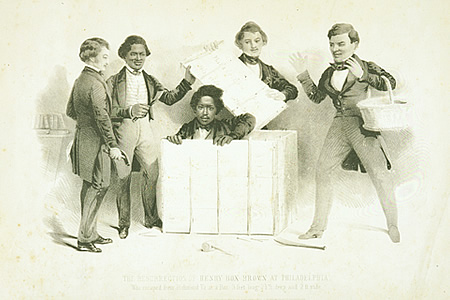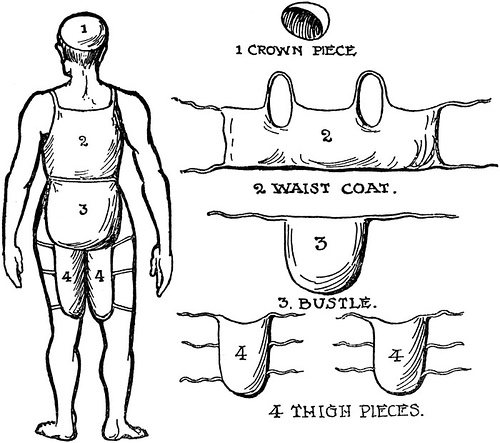Quidquid latine dictum sit, altum viditur.
“Whatever is said in Latin seems profound.”
Quidquid latine dictum sit, altum viditur.
“Whatever is said in Latin seems profound.”
Here’s what a pact with Satan looks like:
I deny God, Father, Son, and Holy Ghost, Mary and all the Saints, particularly Saint John the Baptist, the Church both Triumphant and Militant, all the sacraments, all the prayers prayed therein. I promise never to do good, to do all the evil I can, and would wish not at all to be a man, but that my nature be changed into a devil the better to serve thee, thou my lord and master Lucifer, and I promise thee that even if I be forced to do some good work, I will not do it in God’s honor, but in scorning him and in thine honor and that of all the devils, and that I ever give myself to thee and pray thee always to keep well the bond that I gave thee.
This one was presented as evidence against Urbain Grandier, a French Catholic priest who was executed for seduction and witchcraft in 1634.

Where there’s a will, there’s a way. In 1849, Henry Box Brown escaped slavery by mailing himself to Philadelphia.
Brown stood 5’8″ and weighed 200 pounds, and he spent 26 hours in a box 2’8″ x 2′ x 3′. Unfortunately, he spent a lot of it upside down. “I felt my eyes swelling as if they would burst from their sockets,” he later wrote, “and the veins on my temples were dreadfully distended with pressure of blood upon my head.” The trip from Richmond covered 275 miles by overland express stage wagon.
When the box was opened, his first words were “How do you do, gentlemen?”
Record skyscrapers through history:
“In keeping with Channel 40’s policy of bringing you the latest in blood and guts in living color, we bring you another first, an attempted suicide.” — Florida newscaster Christine Chubbuck, before shooting herself on live television, July 15, 1974

In Death Valley, rocks move. No one’s actually seen it happen, but they leave tracks hundreds of feet long. Experts attribute the phenomenon to a combination of wind, ice, and mud, but some of the stones weigh as much as a man. One 700-pound rock disappeared altogether in May 1994. Hmm.
08/28/2014 UPDATE: The puzzle is solved! (Thanks, Dan.)
A minister, a priest, and a rabbi walk into a bar.
The bartender says, “Is this a joke?”
In April 1865, Abraham Lincoln related the following story to his bodyguard, Ward Hill Lamon:
About ten days ago, I retired very late. I had been up waiting for important dispatches from the front. I could not have been long in bed when I fell into a slumber, for I was weary. I soon began to dream. There seemed to be a deathlike stillness about me. Then I heard subdued sobs, as if a number of people were weeping. I thought I left my bed and wandered downstairs. There the silence was broken by the same pitiful sobbing, but the mourners were invisible. I went from room to room; no living person was in sight, but the same mournful sounds of distress met me as I passed along. I saw light in all the rooms; every object was familiar to me; but where were all the people who were grieving as if their hearts would break? I was puzzled and alarmed. What could be the meaning of all this? Determined to find the cause of a state of things so mysterious and so shocking, I kept on until I arrived at the East Room, which I entered. There I met with a sickening surprise. Before me was a catafalque, on which rested a corpse wrapped in funeral vestments. Around it were stationed soldiers who were acting as guards; and there was a throng of people, gazing mournfully upon the corpse, whose face was covered, others weeping pitifully. “Who is dead in the White House?” I demanded of one of the soldiers, “The President,” was his answer; “he was killed by an assassin.” Then came a loud burst of grief from the crowd, which woke me from my dream. I slept no more that night; and although it was only a dream, I have been strangely annoyed by it ever since.
He was assassinated a few days later.

“The accompanying picture is no imaginary instance, but is actually taken from an official document. The figure is supposed to represent one of these Deal boatmen, and the numerals will explain the methods of secreting the tea. (1) Indicates a cotton bag which was made to fit the crown of his hat, and herein could be carried 2 lbs. of tea. He would, of course, have his hat on as he came ashore, and probably it would be a sou’wester, so there would be nothing suspicious in that. (2) Cotton stays or a waistcoat tied round the body. This waistcoat was fitted with plenty of pockets to hold as much as possible. (3) This was a bustle for the lower part of the body and tied on with strings. (4) These were thigh-pieces also tied round and worn underneath the trousers. When all these concealments were filled the man had on his person as much as 30 lbs. of tea, so that he came ashore and smuggled with impunity. And if you multiply these 30 lbs. by several crews of these Deal boats you can guess how much loss to the Revenue the arrival of an East Indiamen in the Downs meant to the Revenue.”
— East Indian smugglers’ scheme to evade English customs officers, circa 1810. From E. Keble Chatterton, King’s Cutters and Smugglers, 1700-1855, 1912
“I can’t listen to that much Wagner. I start getting the urge to conquer Poland.” — Woody Allen